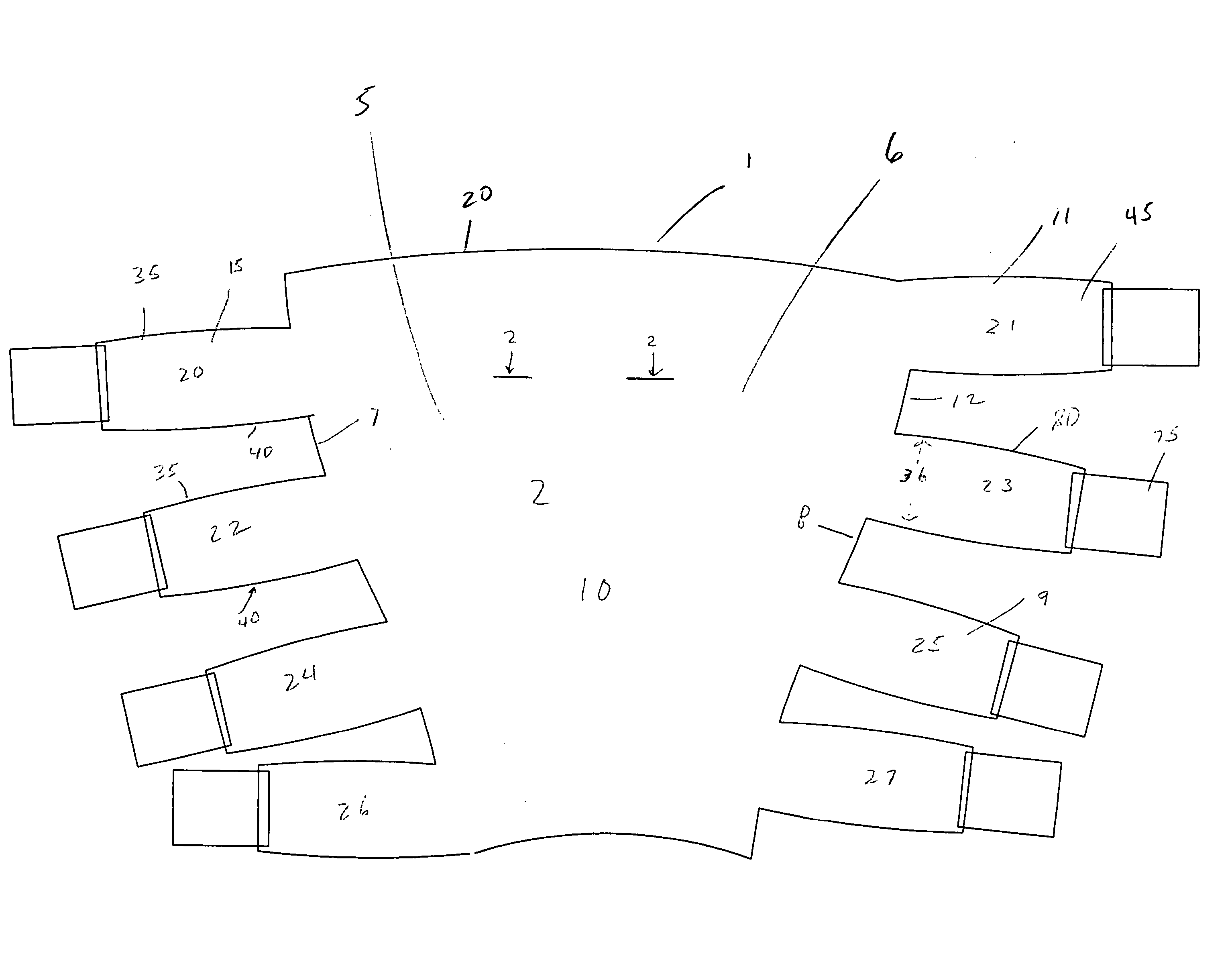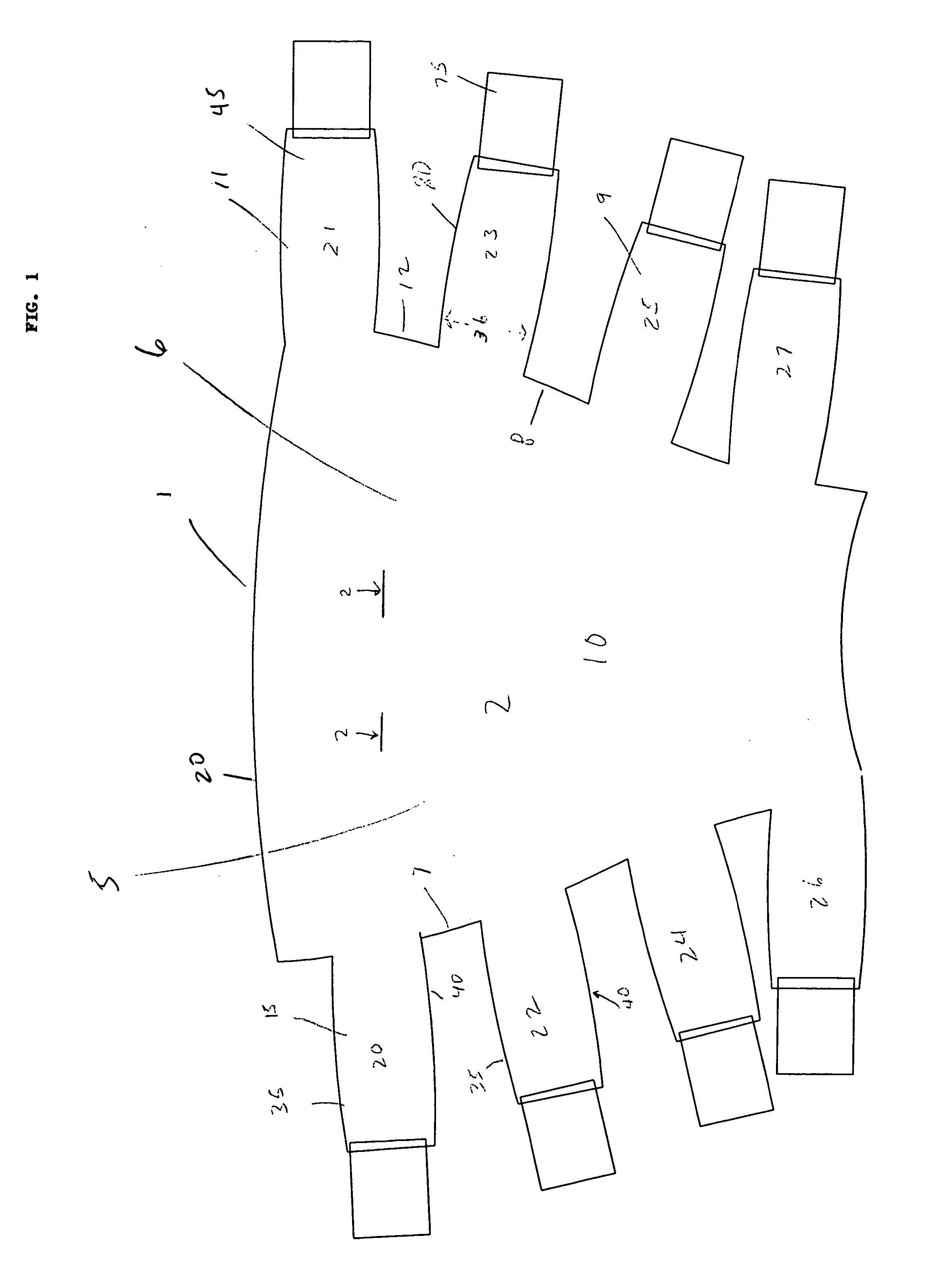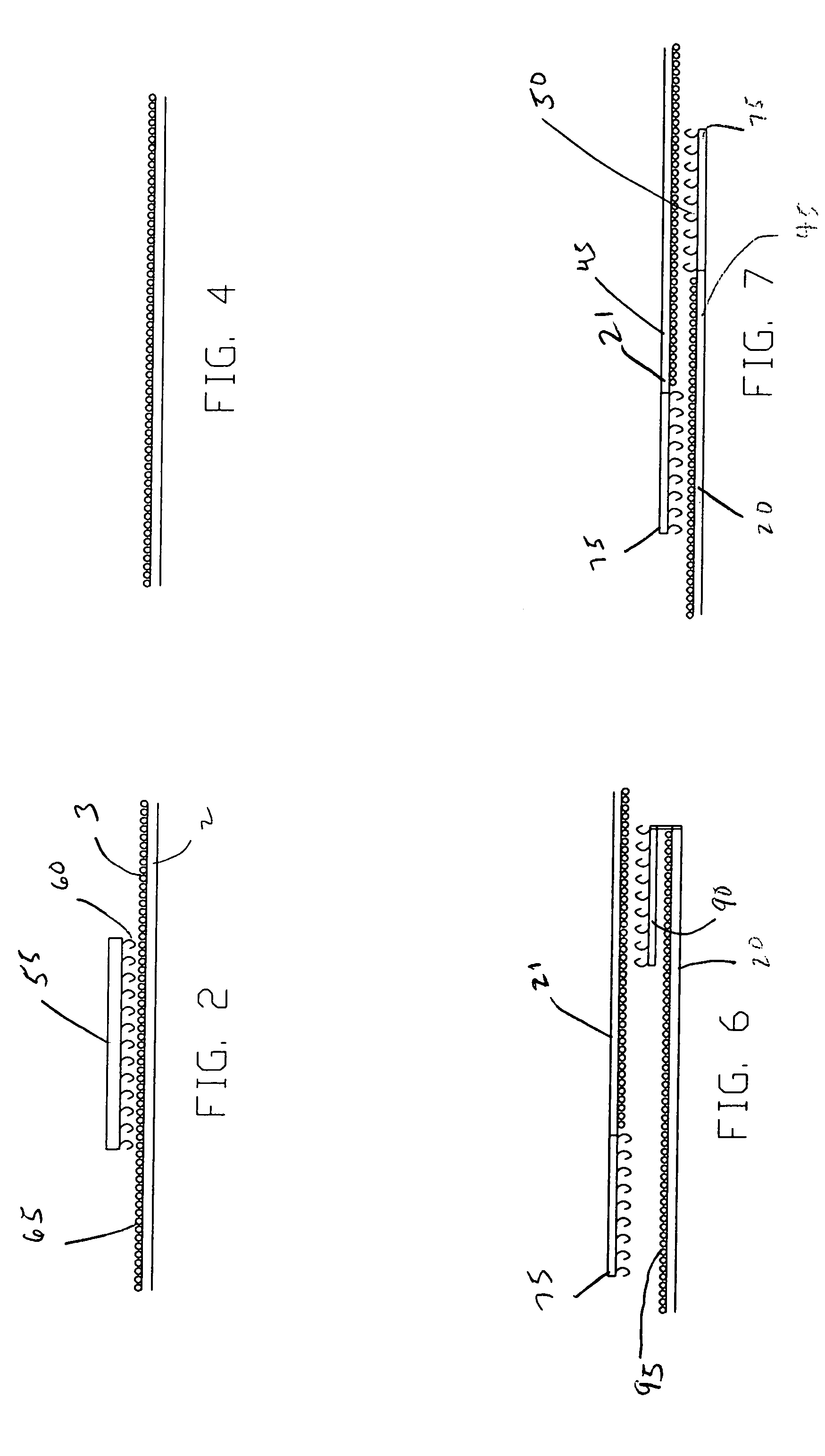Limb encircling therapeutic compression device
a compression device and limb technology, applied in the field of limb encircling therapeutic compression devices, can solve the problems of loss of compression, difficulty in application and removal, various degrees of shortcomings, etc., and achieve the effect of short or long-term us
- Summary
- Abstract
- Description
- Claims
- Application Information
AI Technical Summary
Benefits of technology
Problems solved by technology
Method used
Image
Examples
Embodiment Construction
[0054] A preferred embodiment of the invention is shown in FIG. 1. The garment 1 has a central region 10 which has an inner surface 2 and an outer surface 3 (FIG. 2). The central region 10 is formed from material which is flexible and substantially inelastic. Lateral margins 7, 8 are disposed respectively in lateral regions 5, 6 which extend laterally from the central region. In practice, the central region is wrapped partially around a user's limb.
[0055] Extending from opposite lateral margins 7, 8 of the lateral regions 5, 6 are a plurality of bands (20-21, 22-23, 24-25, 26-27). Each band 15, which has an inner 9 and an outer surface, has a proximal edge 35 and a distal edge 40 and terminates in a distal region 45. The bands 15 are positioned for wrappingly or circumferentially engaging either with the opposite lateral region or with the edges and / or the surfaces of one or more bands extending from the opposite lateral margin.
[0056] It should be understood that bands which exten...
PUM
 Login to View More
Login to View More Abstract
Description
Claims
Application Information
 Login to View More
Login to View More - R&D
- Intellectual Property
- Life Sciences
- Materials
- Tech Scout
- Unparalleled Data Quality
- Higher Quality Content
- 60% Fewer Hallucinations
Browse by: Latest US Patents, China's latest patents, Technical Efficacy Thesaurus, Application Domain, Technology Topic, Popular Technical Reports.
© 2025 PatSnap. All rights reserved.Legal|Privacy policy|Modern Slavery Act Transparency Statement|Sitemap|About US| Contact US: help@patsnap.com



